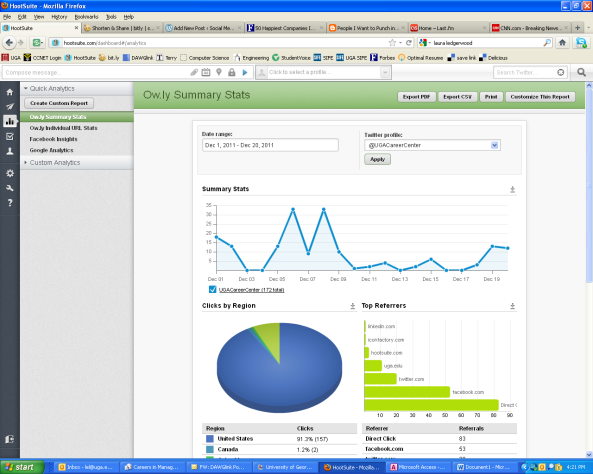LinkedIn is a powerful networking site, but it can be confusing to job seekers when they first visit. You don’t have the ability to post on anyone’s walls, create picture albums or play games. So what do you do?
LinkedIn can be used for many things, but there are certain parts of the site I think are particularly useful in helping you find a job. Here are 5 things you can do today to get more value from LinkedIn:
- Join professional groups. Click on the “More” tab at the top of the page and select the “Skills and Expertise” option. Plug in your major, the industry you’re interested in or a skill you have that you would like to use in a future job. It will give you suggested professional groups to join based on what you typed in among other useful pieces of information. A lot of groups will have an internal “Jobs” tab that could give you leads. If nothing else, it can help you identify other people you could network with that are interested in the same area as you. Don’t be shy! Message someone and ask them for advice or tips on how you can break into the field.
- Make people want to talk to you. Make your profile dynamic by adding in samples of your work: PowerPoint presentations, professional blogs, or a portfolio are just a few of your options. Don’t forget to ask for recommendations from previous employers so you can include that on your profile. You can also request for your connections to endorse your skills.
- Create a keyword rich profile. If you click on the “Jobs” tab in the top bar you’ll see that LinkedIn suggests jobs you may be interested in based on the information you included in your profile. If you aren’t sure what career you want to pursue in the future, this could be a great place to get ideas! It also has a broader job board you can search through using keywords.FYI–Some employers seek out inactive job seekers using keywords so you may even get contacted about future opportunities if you strategically use them!
- Create conversation. Share information in groups or pose questions. This may help you get noticed by other members who might click on your profile (aka your online resume). If you start building professional relationships, you naturally have an insider’s advantage if you apply to positions that are affiliated with your networking contacts.
- Contact members directly. You’ve got a name. You know where they work. Google it! See if you can find an email address so you can contact them outside of LinkedIn if you can’t message them directly through the site. Just don’t ask if they have any jobs open. A better way to get the same information would be to ask a question like “I’m really interested in pursuing a career similar to yours in the future. Do you have any tips or advice that you would be willing to share with me?” If you make a good impression they’ll tell you about any open jobs they have now and if they don’t have any at least you got some advice that could lead to a job. And who knows? Maybe a position will open up a few weeks after you talked. Again, if you impressed them, you can bet they will be emailing or calling you to get you to apply.
Tip: Do an advanced people search to see if any UGA alums work in your targeted organizations or industries. People are more likely to respond to these requests when they can relate to you.




 What do you do when you need to find the answer to a question? Pull out an encyclopedia? Head over to the local library? Talk to the reference librarian? Likely not. You probably go on Bing or Google to find the answer online. Employers are no different when they are trying to answer the unknown: are you a good fit for my company? Do you seem like the kind of person I want to work with day in and day out? Is this person hireable?
What do you do when you need to find the answer to a question? Pull out an encyclopedia? Head over to the local library? Talk to the reference librarian? Likely not. You probably go on Bing or Google to find the answer online. Employers are no different when they are trying to answer the unknown: are you a good fit for my company? Do you seem like the kind of person I want to work with day in and day out? Is this person hireable?



